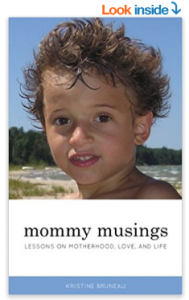“Mom, I’m bored,” said James, lying on the couch in the family room.
I’d like to tell him to get up and go do something, like take the dog for a walk, kick the soccer ball, or call a friend. But I know that giving him a list of suggested activities won’t work. He needs to sit with his boredom.
Instead I tell him: “It’s good to be bored.” Of course, that doesn’t go over very well with my twelve-year-old, and he gives me an eye-roll.
Being bored is to feel weary or disinterested with whatever it is you’re doing at the moment.
When we feel the edge of boredom creeping upon us, we often grab for a shiny object – a new video game, iPhone app, or pressing this red Bored button, which will take you to a random, interactive website selected to help relieve boredom. Because the opposite of boredom is excitement and interest.
Buddhist teacher, author, nun and mother, Pema Chödrön suggests that we really shouldn’t resist or change what we do when we’re bored, but observe the physical movement of what we do in the moment of feeling bored. The goal, according to Chödrön in Comfortable with Uncertainty is “not grabbing for entertainment the minute we feel a slight edge of boredom coming on.”
When I’m excited about something, I talk very fast, wave my hands around, stand up, move from side to side and get a little jittery and jumpy. That’s a good thing. I think. My son has similar spazzy movements when he gets excited. But then again, so do most kids when they’re not bored.
When I’m losing ground, or feeling bored, however, I also make jittery, jumpy movements. I can’t sit still. I’m quick to act and deflect because I’m feeling uncertain about something. I might scratch at an itch I don’t have, or eat when I’m not hungry. My son might say that he’s bored while watching TV, when he’s really feeling uncomfortable about what to do next.
There’s something I don’t want to experience, so I avoid it by doing something else.
Chödrön suggests there’s a connection between the arising of a craving, or aggression, or loneliness that leads to our attachments, and whatever action we take as a result to avoid an unpleasant experience. Addictions and compulsive actions arise out of avoidance. For example, I might eat chocolate to distract me from an underlying uneasiness that’s rising: Is my article good enough to submit? My son might turn on the TV to have some background noise because none of his friends are around to play: Do my friends think I’m annoying?
Neither my son nor I want to be alone with our thoughts because it’s the uncertainty that makes us feel uncomfortable.
Instead of scarfing chocolate, I try to meditate, but sitting still doesn’t give me peace of mind. I continue to come up with reasons to be somewhere else. I lie on my back, unsure of what to do except stay still for a few minutes while the bronze Buddha laughs next to me.
Instead of turning on the TV, James goes outside and sits on the deck. Stillness and peace come, but alternate with restlessness and unease.
We might not really need to solve our issue with boredom because it might be in our heads.
Maybe we just need to accept boredom, sit with it and say: It’s good to feel bored.
What do you think?
Thanks for reading. If you like this post, please feel free to share it with your friends or send me a comment. You can also post a comment on my blog or Facebook.


